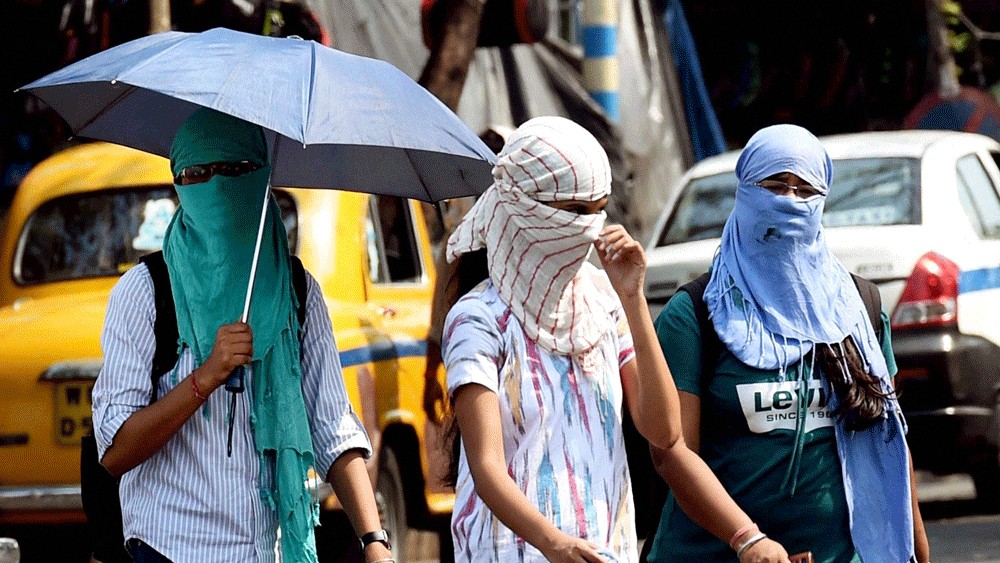
A file photo of women covering themselves to protect themselves from the Sun.
Credit: PTI file photo
Patna: Bihar is likely to witness hotter summer seasons and scantier rainfall in the next two decades, which may pose greater health risks with more severe heat waves and an 'exponential' rise in vector-borne diseases.
The submission was recently made before the state assembly by the Department of Environment, Forest and Climate Change (DEFCC) which cited a report of the Bihar State Pollution Control Board (BSPCB).
"The macro-level climate analysis reveals shifts in Bihar’s rainfall and temperature patterns over the coming decades. Projections indicate that minimum winter temperatures will rise by 0.5 degrees Celsius to 1 degree C by 2040 across the state and by 1.5 degrees C- 2 degrees C in 2050-2070."
"Summer temperatures show a similar rise, starting with 1 degree C-1.5 degrees C in the 2040s to anticipated temperature increase beyond 2 degrees C by 2070," the report said.
Projections also indicate a surge in flood intensities in the northern Tarai zone while the intensity of drought could rise with an increase in consecutive dry days for the southwestern districts, the latest annual report of BSPCB said.
"Monsoon precipitation is projected to display a declining trend. All regions estimate sharp decreases in winter rainfall by 2040 and 2050," it said.
Commenting on the annual report (2023-24), BSPCB Chairman Devendra Kumar Shukla, said it has been tabled in the assembly and talks about estimated shifts in Bihar’s rainfall and temperature patterns over the coming decades.
"The projection, covering all 38 districts, is based on state and district-level data as well as information and insights from experts and stakeholders."
"I must say that if immediate steps are not taken to stop carbon emission, the global temperature will increase considerably, and consequently several countries, including India, will have to face consequences. Bihar will certainly witness adverse impact of the changing weather patterns," said the BSPCB chairman told PTI.
The projected decline in winter rainfall and higher summer temperatures could severely impact groundwater recharge potential and spur acute shortages of water for households, agriculture and industry in the state, Shukla said.
"Higher temperatures could lead to an exponential rise of vector-borne diseases," he said, adding that Bihar needs a strategy for an integrated approach to mobilise resources for climate resilient and low carbon development.
Fourteen of the 50 districts considered most vulnerable to climate change in India are in Bihar. The state's current contribution to national emissions is modest, the chairman said.
As per the analysis, the energy sector is the highest emitter of greenhouse gas emissions, followed by agriculture, forestry and the waste sector, he said.
"Despite all these, I must say that Bihar has been actively promoting community-based forest management initiatives, encouraging people's participation in afforestation, and adopting eco-friendly practices to minimize the adverse impact of climate changes in the coming years," he said.
The state, of course, requires a long-term strategy that promotes climate resilience across sectors, he said.
"Work is on. The state aims at enhancing its forest and tree cover from 15 per cent in 2019 to 17 per cent by 2028," the BSPCB chairman added.